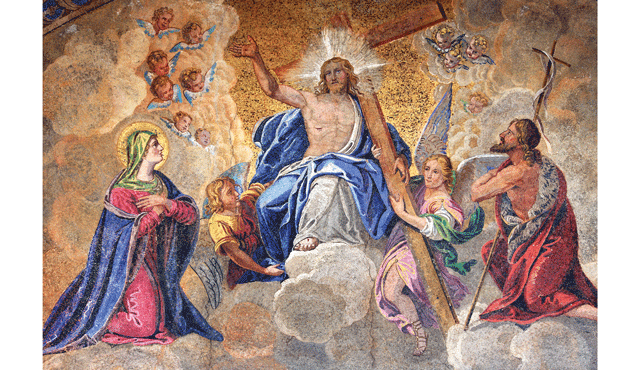Every year on the last Monday in May our nation pauses to remember the great sacrifices made by our military in defense of our freedoms. Remembering the sacrifice is how we honor their legacy and shine a light on the great price paid for our independence from tyranny.
Holy Week is like our liturgical “memorial days” during which Catholics pause in much the same way, to reflect on the suffering and sacrifice Jesus made in defense of our very souls and rescue from the tyranny of sin. The Resurrection is the singular event that validates our faith in Christ. But the joy of Easter, only comes through Calvary and remembering the sacrifice adds poignancy to our joy at salvation.
From the earliest times, Christians have revisited the events leading up to the great victory death achieved through the Resurrection. This time is called the Holy Triduum. Lent ends and the Triduum begins with the Mass of the Lord’s supper on Holy Thursday and culminating with the Resurrection on Easter Sunday.
However, we actually begin to commemorate the path to our salvation a week before, on Palm Sunday. This Mass reflects on Jesus’ triumphant entry into Jerusalem. Since ancient times, the palm has symbolized victory, triumph, peace and immortality. It appears often on first-century Jewish ossuaries and on coins. The crowd in Jerusalem was signaling the kingship and authority of Jesus through the symbol of the palm, something that undoubtedly did not sit well with the Jewish and Roman authorities and set into motion the events of the week.
Remembering that day, we begin Mass outside the church, where the Palms are blessed and we then enter the church rejoicing and singing Hallelujah. However, as the Mass concludes the mood becomes more somber as we anticipate the Passion.
The following day is the Chrism Mass, held at the Arboretum at Christ Cathedral, where the Bishop gathers with all the priests and clergy in the Diocese to bless the holy oils that will be used throughout the diocese all year. According to Lesa Truxaw, director of Liturgy for the Diocese, “Gathering all the priests with the Bishop is an important part of the Chrism Mass. The priests renew their priestly promises made at their ordination.” The public is invited to the celebration which will be held this year on April 15 at 5:30 p.m. at Christ Cathedral.
Holy Thursday, or the Mass of the Lord’s Supper, is when we remember our call to service as Christians and commemorate the establishment of the Holy Eucharist. Like Jesus, the priest washes the feet of the followers. How this is done may vary from parish to parish, but the message is our role as servant to others. After Mass, the Eucharist is taken out of the Church for adoration through Good Friday.
Good Friday is the commemoration of Christ’s great suffering and death on the cross. This sacrificial love demonstrates just how much and to what extent the Word made Flesh loved us. The reading of the Passion is always the same, from John 18. “We are called to pray for the needs of the world,” says Truxaw. “There is also the veneration of the Holy Cross, the Lord’s prayer and then the Eucharist is distributed from extras consecrated on Holy Thursday. There is no consecration on Good Friday. In a sense, we fast from the celebration of the Eucharistic Sacrament.”
On Holy Saturday Catholics are urged to pray and meditate on the Passion, but no services are held during the day. The Easter Vigil begins after dark, not at sunset. This means that the service usually goes well into the evening, 2 1/2 – 4 hours, so parents of younger children and babies should take this into consideration.
Like Palm Sunday, Holy Saturday or Easter Vigil begins outside. In contrast to the light and celebration of the previous Sunday, the darkness and solemnity is broken with the Service of Light. “The Pascal Candle is blessed, and the congregation, each holding candles, process into the darkened church symbolically dispelling the darkness from our hearts and minds,” said Truxaw. “There are a maximum of nine readings associated with this service, although the priest may eliminate a few if there are a lot of catechumens and candidates. In any case it is definitely the mother of all vigils.”
This is a Mass, however, the sacraments we reference in a regular Mass are actually given in the context of the Vigil Mass. Following the Homily, are the baptisms and profession of faith by the congregation. The next step is confirmation, which in this case is performed by the priest not the Bishop, and finally during the Eucharistic liturgy the newly baptized and confirmed are able to receive their first communion with the congregation.
The conclusion of the Easter Vigil is joyful and triumphant and this joy continues through the Easter season which concludes on Pentecost Sunday.
Having walked with Jesus through the Passion, Easter Sunday feels exuberant. In a sense, we have just walked through the Valley of Death into life. Something to remember all year long.

